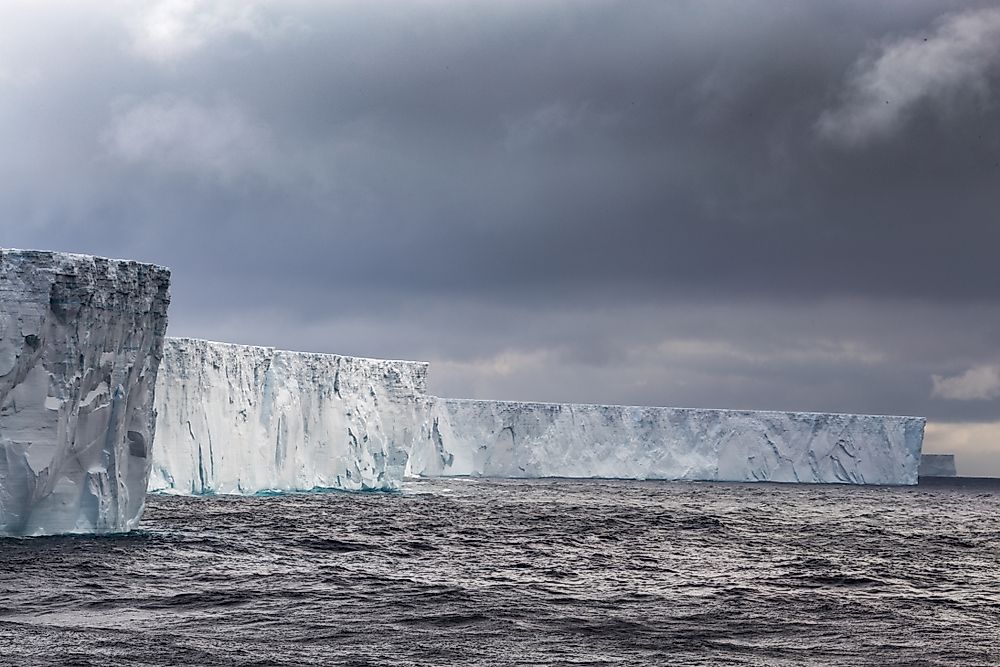Which Was The World's Largest Recorded Iceberg?

What Is an Iceberg?
By definition, an iceberg (also known as an ice mountain) is a huge freshwater ice piece that is freely floating in open waters. This piece of ice comes to be after breaking off from a much bigger ice shelf or glacier. The process of breaking off from the main glacier is known as ice calving, iceberg calving, or glacier calving. Usually, most of the iceberg, about 90%, is submerged with only the tip appearing above the surface of the water. This partial submergence is possible because water has a higher density (1025 kg/m3) as a liquid compared to when it is frozen (920 kg/m3). For this reason, oceans in other planets, where they have liquids such as methane, cannot have icebergs since the density of these liquids is higher than in the solid state. Consequently, any frozen substance in these other planets’ oceans will sink.
What Was the World’s Largest Iceberg?
Earth has seen some massive icebergs over the course of the years but the biggest was known as Iceberg B-15. The iceberg, which broke off from Antarctica’s Ross Ice Shelf, had a massive length of about 183 miles and width of about 23 miles. The surface area of Iceberg B-15 was a massive 4,200 square miles, which was bigger than the whole of Jamaica. Having broken off back in the March of 2000, Iceberg B-15 went on ahead to break off into smaller icebergs. Among the sundered pieces, the biggest one was known as Iceberg B-15A, which eventually drifted off to the Ross Sea from Ross Island. In October 2005, Iceberg B-15A also broke down further into even smaller pieces. Iceberg B-15A spanned an area of about 2,500 square miles. Iceberg B-15T, pictured above, measured 32 miles long by 8 miles wide.
Calving of Iceberg B-15
The calving of Iceberg B-15 back in 2000 happened at the Ross Ice Shelf, which is close to the Roosevelt Island in Antarctica at coordinates 79°25′ S 162°00′ W. The calving of the world’s largest iceberg happened along preexisting cracks in the Ross Ice Shelf. Scientists are still not sure about the origin of the cracks in the ice shelf. However, the widely accepted theory is that the breakage is part of a natural process that happens after a century or century and a half.
Further calving led to the birth of Iceberg B-15A in 2003, which drifted away. From B-15A spawned iceberg B-15K, which had a shape similar to that of a knife and an area of about 116 square miles. B-15K embarked on a journey northwards while B-15A drifted towards the Drygalski Ice Tongue. In April 2005, the two masses collided but B-15A was unaffected while the tongue’s tip was broken. In 2005, B-15A met its end after running aground off Victoria Land’s Cape Adare.
Effects of Iceberg B-15 on Wildlife
The movement of the icebergs had several effects on the ecology of Antarctica. For example, the scientists monitoring the movements suggested that the icebergs would have an impact on the population of animals like Adélie penguins, Skuas, and Weddell seals. In the case of penguins, the population would be affected by the chicks dying since the parents would be blocked off from them or would have to take a longer root to get back. Either way, many chicks most likely died.











